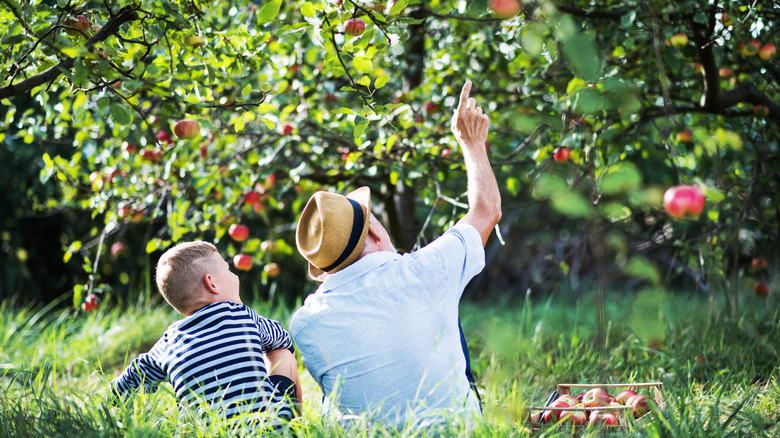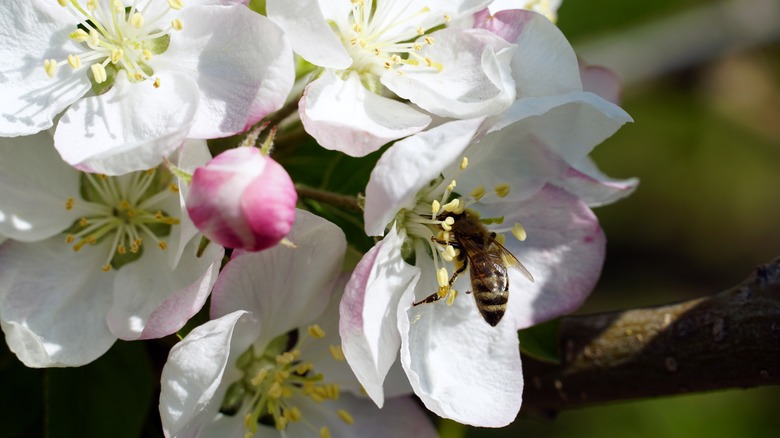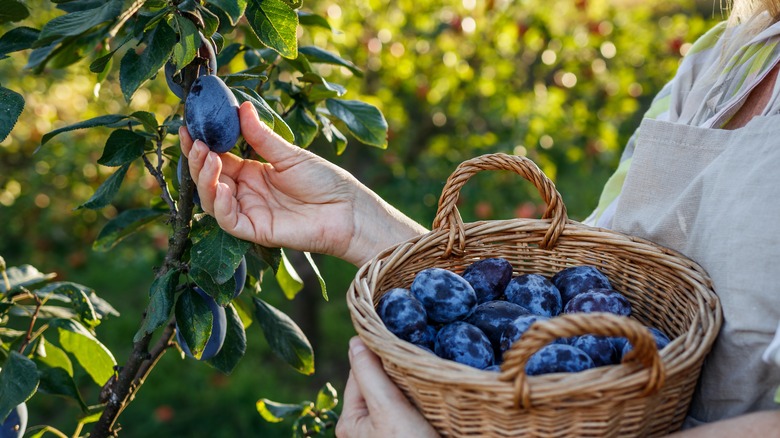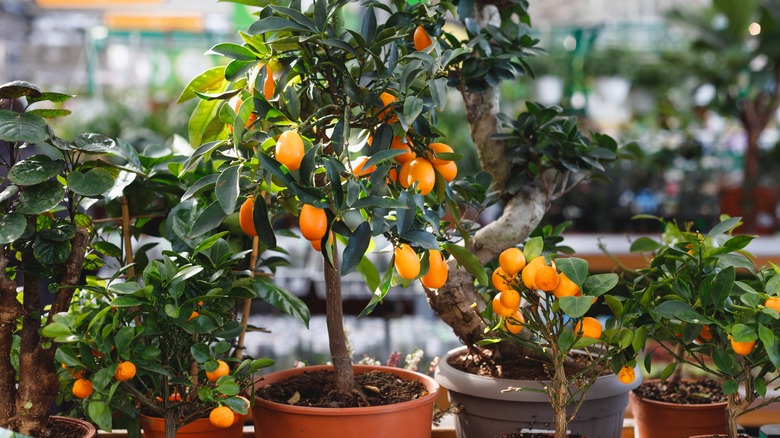What Is A Micro-Orchard, And Why Is It A Good Approach To Growing Fruit, According To Our Expert Orchardist
Orchards are usually considered large plantings of multiple trees, and many people who'd like to have an orchard think they don't have the space. But there are options for growing fruit trees in smaller spaces. Micro-orchards are becoming popular among urban gardeners and those who practice permaculture. At its most basic, a micro-orchard simply means a small orchard (five trees is considered the minimum) that is appropriate to one's available space; it's also less work than managing a larger orchard. Micro-orchard plantings can be designed to include a mix of fruit and/or nut trees, and they can enrich biodiversity, so they're one of the best ways to grow fruit in your garden.
The growing popularity of micro-orchards has inspired a term known as "micro-orcharding", which refers to high-density plantings that produce a comparatively large amount of food. These plantings also allow maximum diversity of fruit varieties, and many fruits are available in dwarf cultivars well-suited for micro-orchards. Depending on your growing zone, you can potentially harvest fruit from June through October.
Smaller trees mean less fruit, but more trees per square foot mean a wider assortment of fruits — so keeping trees small and well-pruned is key to good production. Well-pruned fruit trees are also more hardy in harsh weather conditions, as well as more resistant to pests and diseases. The timing of pruning is important, so be sure to consult resources like The Orchard Project for tips on pruning different fruit or nut trees.
Benefits of a micro-orchard
If carefully planned and well-maintained, a micro-orchard can provide a cornucopia of delicious foods. Planting fruits and vegetables that ripen at different times means a nice, long, continual harvest season. Imagine lettuces, black raspberries, and strawberries in June, herbs and cherries in July, then plums, apricots, and blackberries in August, and maybe some tomatoes; then peaches in September, followed by pears and apples into October.
If this kind of garden season sounds like a dream come true, imagine being able to grow and harvest all these foods in a small space (like an 8 x 12-foot lot, or a 10 x 10 section of your yard). The beauty of the micro-orchard idea is that it encourages creativity and learning more about horticulture; understanding the needs and habits of the foods you're growing makes you a better gardener and a more attuned steward of the land.
Having a micro-orchard is not just a good way to grow food. It is also an excellent way to create a flourishing habitat for pollinators and wildlife. This increases the biodiversity of your garden, and provides food and shelter for birds, insects, and various mammals, from squirrels and rabbits to deer and foxes, depending on your area. If you want to keep larger mammals out of your micro-orchard, you can use fencing to discourage them. But if you normally enjoy having deer in your yard, fallen apples provide a good food source for them before winter comes.
Designing a micro-orchard
To get started planning the design for your micro-orchard, look at what you already have. If there are some mature fruit trees, prune them so you can plant more. Choose dwarf trees for planting, which produce more fruit on a smaller tree. In a micro-orchard, you will plant trees more closely together than usual, with about 6 to 8 feet of space between each fruit tree. Using good soil practices (improving drainage and nutrients with amendments and organic compost) will help tree roots stay healthy in a smaller space.
If you have containers, create an arrangement that allows you to grow food crops in them while utilizing the available light (tomatoes need full sun, while many greens grow well in partial sun). You can take advantage of any vertical fence or wall space for growing, too. You can try creating an espaliered fruit tree structure, or grow fruit vines such as kiwis if your climate is suitable. Putting bird feeders in your fruit trees keeps the birds happy.
Consider other features for your micro-orchard that let you grow more diverse food options. Polyculture and beneficial accumulators are permaculture principles that work well for orchard spaces. Polyculture encourages choosing the best plants for available soil, space, and light, while beneficial accumulators are plants that attract insects that increase soil nutrition and renewal. You can start your micro-orchard focused on growing fruit and gradually learn to incorporate additional methods for increasing the health of your garden eco-system, as well as providing nutritious food crops.
Best fruit trees for micro-orchards
Dwarf fruit trees are preferable for micro-orchard planting, as opposed to semi-dwarf, because dwarf trees are bred to produce the most fruit on a small tree. They also mature more quickly to fruit-bearing status than standard-size trees. Dwarf apple cultivars that would do well in a micro-orchard situation include Granny Smith, Zestar, Mcintosh, Fuji, Honeycrisp, Cortland, WineCrisp, and Pristine. These would provide a long season of harvest, beginning in August (Zestar) and lasting through October (WineCrisp).
Dwarf pear varieties may include Anjou, Seckel, Moonglow, and Colette. Stark Brothers has a great selection of dwarf fruit trees available for mail order. Local nurseries may also sell dwarf fruit trees. Try asking orchardists at your farmers' market for recommendations also. There aren't as many dwarf cultivars of stonefruits as apples and pears, but they are available. Gurney's sells its "Reachable" range of peach trees, averaging 5 to 6 feet tall, including Contender (a cold hardy, self-pollinating yellow peach), Reliance (an heirloom great for canning), and Belle of Georgia (a large white peach). They also sell the Cutie Pie dwarf cherry tree for $49.99, which is suitable for containers and hardy in USDA zones 2-7.
Many dwarf fruit tree cultivars are suitable for growing in containers, which allows greater flexibility when designing your micro-orchard. These include citrus fruits like Meyer lemons and mandarin oranges like Tango and Cleopatra. Burpee sells a dwarf patio fig tree that bears fruit year-round for $24.95. There are also dwarf varieties of pomegranate, banana, and persimmon.



